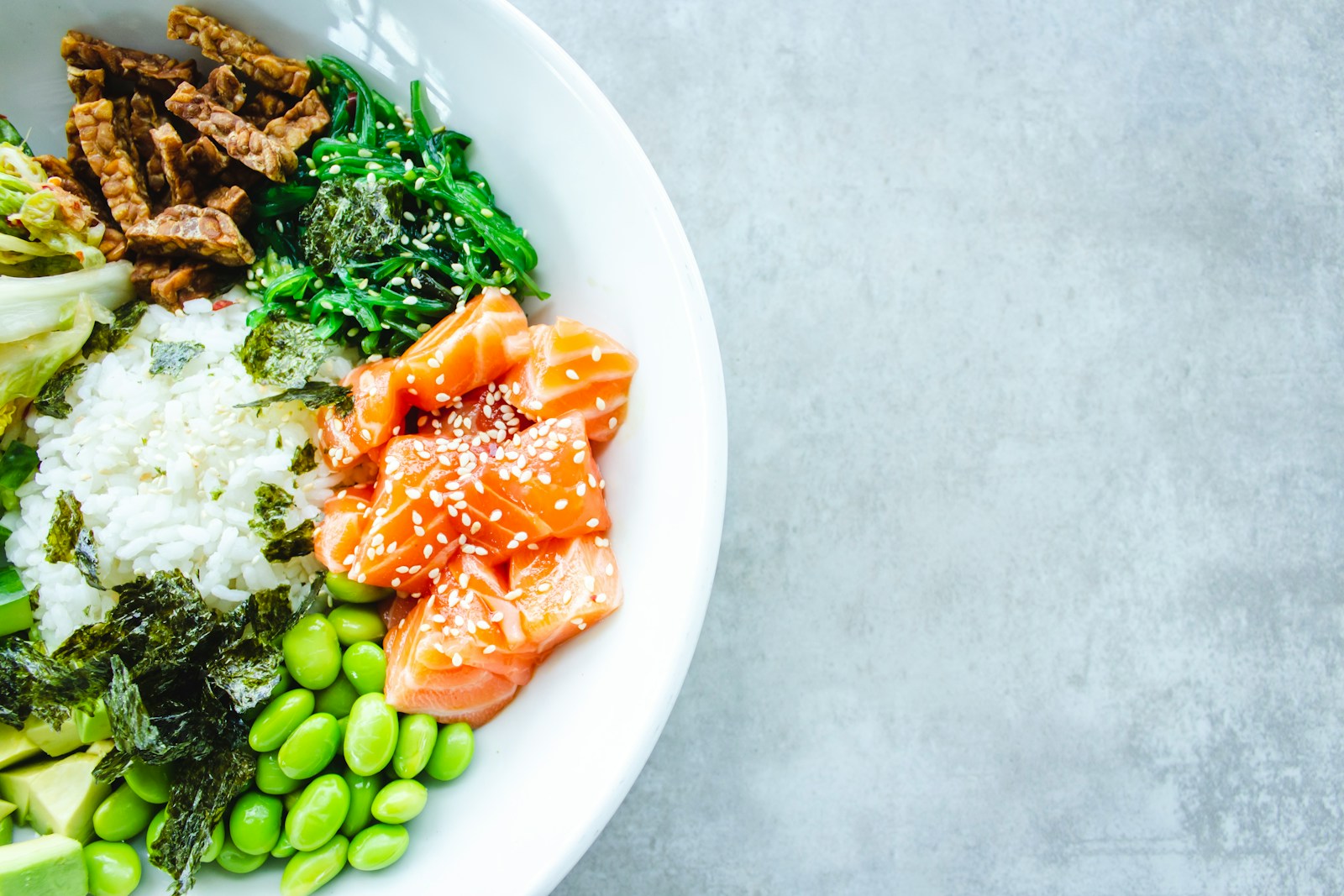Are you tired of the same old bland and boring healthy meals? It’s time to revamp your plate with some creative and innovative ways to incorporate healthy eating into your daily routine. In this blog post, we will explore some exciting and delicious ways to make nutritious choices without sacrificing taste. From colorful and nutrient-packed smoothie bowls to flavorful and satisfying plant-based recipes, you’ll discover how to transform your plate into a healthful and enjoyable experience. Say goodbye to boring salads and tasteless steamed vegetables, and hello to a world of mouthwatering and nutrient-rich options that will leave you feeling energized and fulfilled.
Table of Contents
Rediscovering Fruits and Vegetables
The key to a healthy and vibrant diet lies in the colorful world of fruits and vegetables. These nutritional powerhouses are packed with essential vitamins, minerals, and fiber that are crucial for our overall well-being. Rediscovering the flavors and benefits of fruits and vegetables can transform your plate and elevate your health.
Innovative Salad Concoctions
An easy way to incorporate more fruits and vegetables into your diet is by experimenting with innovative salad concoctions. Try mixing traditional leafy greens with unexpected fruits like strawberries, mangoes, or even pomegranate seeds. The contrasting textures and flavors create a delightful medley that keeps your taste buds guessing and your body satisfied.
Using Fruits as Natural Sweeteners
Fruits are nature’s sweet gift, offering a healthier alternative to processed sugars. They can be pureed and used as natural sweeteners in a variety of recipes, such as smoothies, baked goods, and sauces. The natural sugars in fruits provide a burst of sweetness without the negative impact on blood sugar levels, making them an ideal choice for those looking to satisfy their sweet tooth without compromising their health.
To unlock the full potential of fruits as natural sweeteners, experiment with different fruits like bananas, dates, and apples to add natural sweetness to your favorite dishes. By doing so, you can reduce your intake of refined sugars and enjoy the benefits of the vitamins, minerals, and fiber present in these natural sweeteners.
Whole Grains and Legumes – The Powerhouses
Now, let’s talk about the powerhouses of nutrition – whole grains and legumes. These two food groups are essential for a balanced and healthy diet, as they are packed with fiber, protein, vitamins, and minerals. Whole grains such as quinoa, farro, and barley, and legumes like chickpeas, lentils, and black beans, offer a plethora of health benefits and are incredibly versatile in the kitchen.
Cooking with Quinoa, Farro, and Barley
Grains like quinoa, farro, and barley are not only delicious but also packed with nutrients that can transform your meals. Quinoa, for example, is a complete protein and is gluten-free, making it a great option for those with dietary restrictions. Farro and barley are packed with fiber and have a nutty flavor that adds a delightful crunch to salads, soups, and pilafs. Incorporating these grains into your diet can improve digestive health and lower the risk of chronic diseases such as heart disease and type 2 diabetes.
Creative Uses of Legumes in Meals
With their high protein and fiber content, legumes are a fantastic addition to any meal. Whether you’re making a savory stew, a fresh salad, or a tasty dip, legumes can add a hearty texture and rich flavor to your dishes. Black beans can be used to make veggie burgers, lentils can be transformed into a flavorful Indian dal, and chickpeas can be roasted for a delicious crunchy snack. Incorporating legumes into your diet can contribute to weight management and reduce the risk of heart disease and high blood pressure.
It’s important to include a variety of whole grains and legumes in your diet to ensure you are getting a wide range of nutrients. Experiment with different cooking methods and flavor combinations to elevate the nutritional value and taste of your meals. By incorporating these powerhouses into your diet, you can enhance your overall health and well-being.
Lean Proteins – Beyond the Basics
For those looking to incorporate more lean proteins into their diet, it’s important to venture beyond the basic options and explore the diverse world of healthy eating. By diversifying your protein sources, you can not only improve your overall nutrition but also introduce new flavors and textures to your meals. Here are some creative ways to incorporate lean proteins beyond the basics.
Exploring Plant-based Protein Options
Beyond the traditional meat and dairy options, there is a world of plant-based protein sources waiting to be explored. Beans, lentils, quinoa, tofu, tempeh, and edamame are just a few examples of protein-packed foods that can add a nutrient-rich punch to your meals. Whether you’re a seasoned vegetarian or simply looking to incorporate more plant-based foods into your diet, experimenting with these options can open up a world of culinary possibilities.
Seafood and Poultry: Keeping it Interesting
Keeping your diet interesting and varied is crucial for maintaining long-term adherence to healthy eating habits. When it comes to lean proteins, seafood and poultry are excellent options that can be prepared in a multitude of ways to keep your meals exciting. Whether you’re grilling, baking, or broiling, experimenting with different flavor profiles and cooking techniques can elevate your dishes and keep you excited about your healthy eating journey.
It’s important to note that seafood is an excellent source of omega-3 fatty acids, which are essential for heart health and brain function. Poultry, on the other hand, is a lean protein that can be easily incorporated into a variety of dishes, making it a versatile option for those looking to increase their protein intake.
Healthy Fats Are Your Friends
Keep in mind that not all fats are created equal. While it’s important to limit your intake of saturated and trans fats, healthy fats are essential for maintaining good health. They provide energy, support cell growth, protect your organs, and help your body absorb essential nutrients. By incorporating healthy fats into your diet, you can improve your overall health and well-being.
The Role of Avocado, Nuts, and Seeds
The role of avocado, nuts, and seeds in your diet is crucial. These superfoods are packed with heart-healthy monounsaturated fats, which can help lower bad cholesterol levels and reduce your risk of heart disease. Additionally, they are rich in vitamins, minerals, and fiber, making them an excellent addition to any meal or snack. Add avocado to your morning smoothie, sprinkle nuts and seeds on your salad, or use them as a topping for your oatmeal or yogurt.
Cooking with Healthy Oils
Nuts cooking with healthy oils such as olive oil, coconut oil, and avocado oil can significantly benefit your health. These oils are rich in monounsaturated and polyunsaturated fats, which can help reduce inflammation, lower your risk of heart disease, and improve brain function. When cooking with oils, opt for methods such as sautéing, roasting, or dressing your dishes to preserve the integrity of the fats. your plate can be revolutionized by incorporating these healthy oils into your cooking routine.
Conclusion
Upon reflecting on the various creative ways to incorporate healthy eating into our daily lives, it is evident that there are countless possibilities for transforming our plates and improving our overall well-being. By experimenting with new recipes, adding more fruits and vegetables to our meals, and embracing a balanced approach to nutrition, we can embark on a journey towards a healthier and more vibrant lifestyle. With commitment and determination, anyone can make positive changes to their eating habits and reap the benefits of a nourishing and satisfying diet. It is important to remember that small changes can lead to significant improvements over time, and by approaching healthy eating with an open mind and a sense of creativity, we can truly transform our plates and our health.




